semantics midterm
1/44
Earn XP
Description and Tags
exam on oct 23, 2025
Name | Mastery | Learn | Test | Matching | Spaced |
|---|
No study sessions yet.
45 Terms
compositionality
meaning of a part is determined by what other elements it can combine with — we can determine the meaning of the whole from the meanings of its parts
meaning as truth conditions
if we know what a sentence means, i am able to say whether it is true or false… or at least determine the conditions under which it is true
schema for truth conditions
the sentence “____” is true and only true if (iff) ____
possible worlds
possible worlds are a way of talking about alternatives
“must”
“might”
“if”
partial depictions of possible worlds
proposition
meaning of a sentence — if the meaning of a sentence is its truth conditions, then the proposition expressed by a sentence amounts to its truth conditions
set theory
a set is an abstract collection of distinct objects (called members/elements) — a set is defined by its membership
subset
A ⊆ B — A is a subset of B
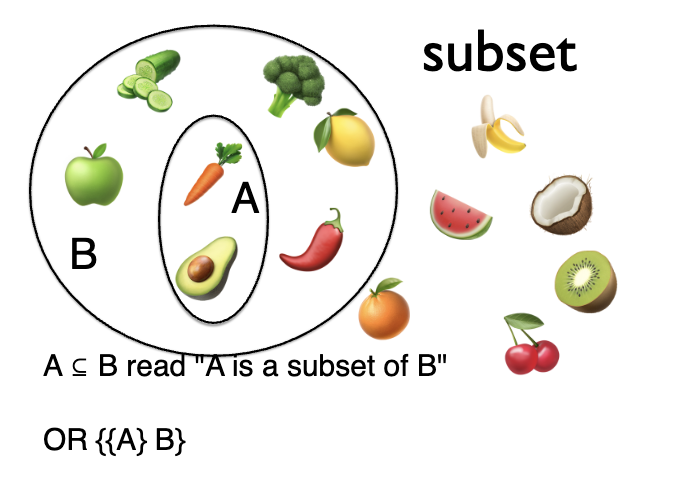
superset
A ⊇ B — A is a superset of B
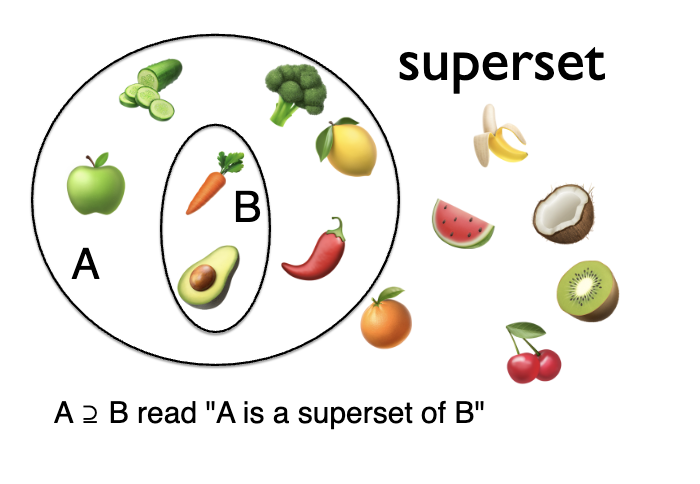
relation between sets
can either hold or fail to hold
operations on sets
produce a new set from one or more sets
function
takes something as an input and gives something as an output
intersection
intersection of set A and set B is the function that returns the set that contains only members of A and B — C = A ∩ B
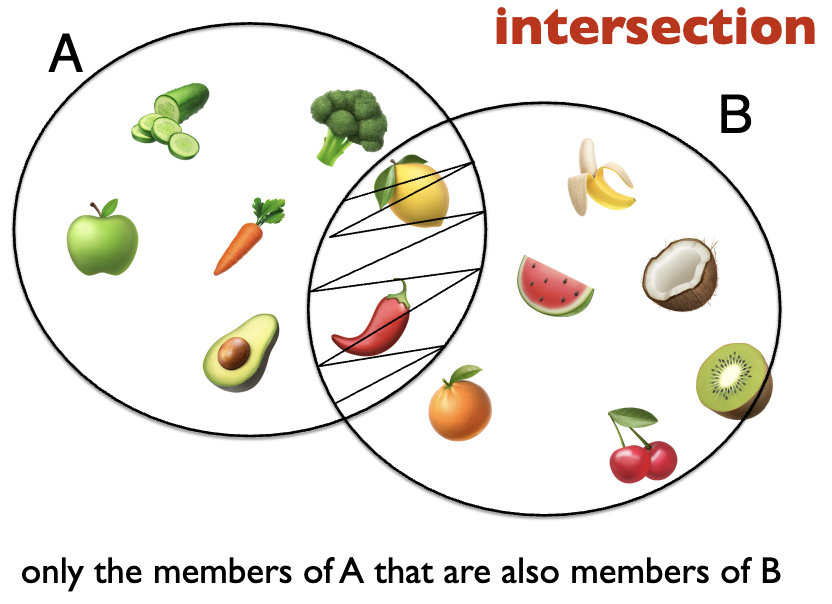
union
union of set A and set B is the function that returns the set that contains all members of A and all members of B — C = A ∪ B
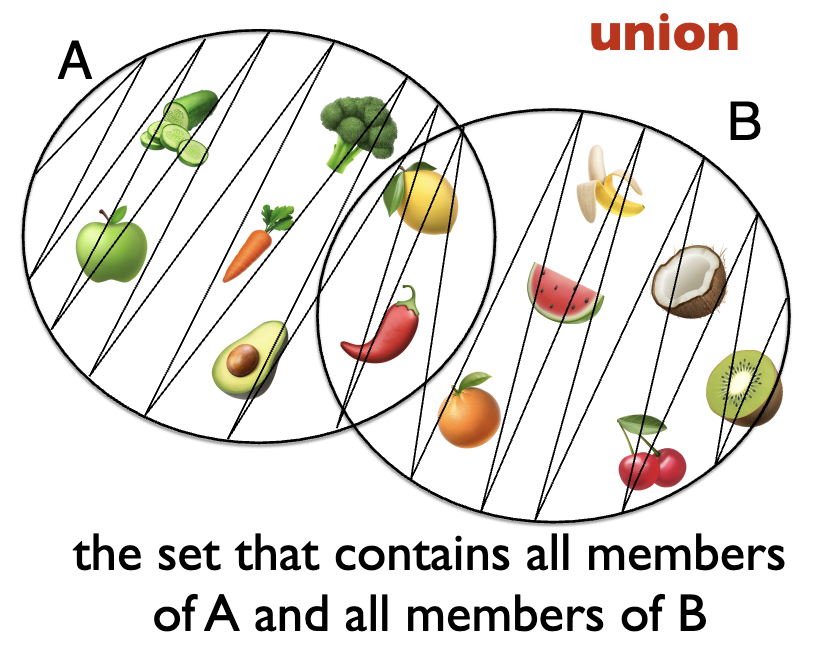
complement
complement of B in A is the set that contains only members of A and not members in set B — C = A−B
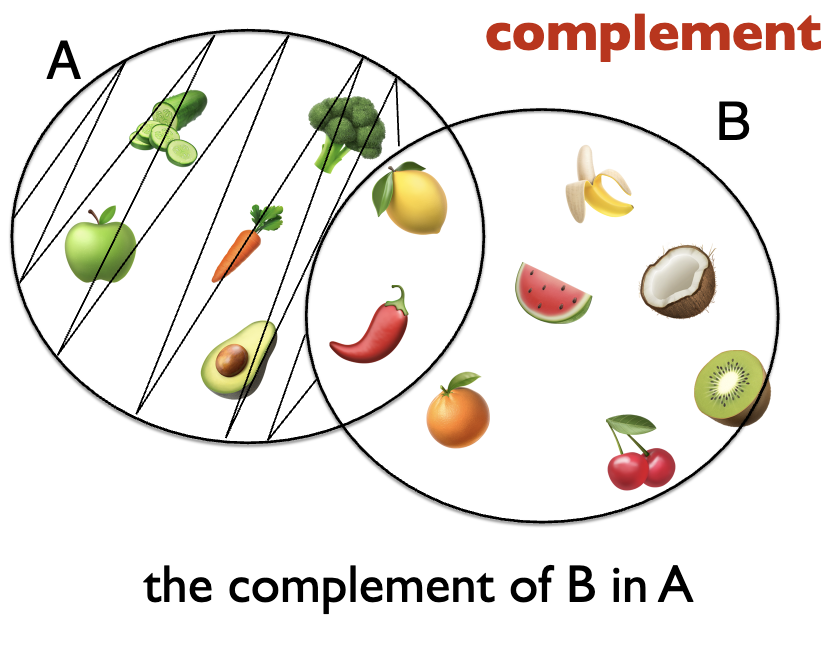
“and”
intersection
“or”
union
“either … or”
union excluding intersection
sentential negation
¬ p — it is not the case that p
when we negate a sentence, we flip its truth conditions
¬ p: W − P: set of all worlds in which p is true and set of all possible worlds (W)
the complement of P in W
p and q are synonymous
“she is taller than him” and “he is shorter than her” — P and Q are equivalent
p and q are contrary
“she is taller than him” and “he is taller than her” — the set of worlds in which p is true disjoint from the set of worlds in which q is true
empty intersection
p and q cannot be simultaneously true, but they could be false
contradictory propositions
if p is true, q must be false and vice versa
“the door is closed” and “the door is open”
entailment
p entails q if the truth of p guarantees the truth of q
subset relationship
semantic meaning of questions
the meaning of a question is the set of its possible answers
example: the semantic meaning of “do you have a pencil” is the set that contains the propositions “i have a pencil” and “i do not have a pencil”
semantic meaning of imperatives
an instruction as to what truth conditions are desirable to hold in the relevant world
example: “bring a pencil!” is true and only true if in the worlds compatible with the speaker’s desires it is true that you brought a pencil
semantic meaning of exclamatives
“what a lovely pencil!” is true and only true if in the worlds compatible with and expressing speaker’s opinions and values, it is true that it is a lovely pencil
proper names
names refer — notice that names themselves do not describe the things they refer to, they just refer
predicates
descriptive words like brown, coughs, skyscraper, and indignant have meanings about things that they describe
predicates can be nouns, verbs, and adjectives
intension
the function determining the reference of a word/phrase — set of all possible worlds in which the sentence is true (truth conditions)
example for “the canadian prime minister”
intension: the leader of the political party that holds the largest number of seats in the parliament
extension
the value of that function — truth values, true or false
example for “the canadian prime minister"
extension: mark carney
saturation
utterances are composed from saturated and unsaturated parts
predication is saturation
“___ swims”
is true only if after we fill the gap with a referent, we get something that is true
we know what we need to fill in to get a complete, saturated proposition
predicates are semantically incomplete in isolation — needs entities
type- driven approach
part of the meaning of unsaturated propositions is that we know what they need to be combined with
types
e: entity/individual
t: truth values
<e,t>
anything that needs to combine with a referent (entity/individual) to return a truth value — predicate/property
intransitive predicate
<e,t>
transitive predicate
<e,<e,t>>
ditranstive predicate
<e,<e<e,t>>>
semantically vacuous words
be
“a(n)” when combined with “be”
modification as saturation
<<e,t>,<e,t>>
modification as intersection
<e,t>
predicative adjective
predicates that require saturation
“that student is asleep"
attributive adjectives
noun-modifying adjectives — adjuncts
adverbs
<e,t>
“the”
<<e,t>,e>>
takes a property (a set of individuals for which the property is true), and returns exactly one of the individuals from the set
“old” — previously mentioned/shared/common ground
the most salient and unique
“a(n)”
<<e,t>,e>>
takes a property (a set of individuals for which the property is true), and returns exactly one of the individuals from the set
new, not currently present in the common ground